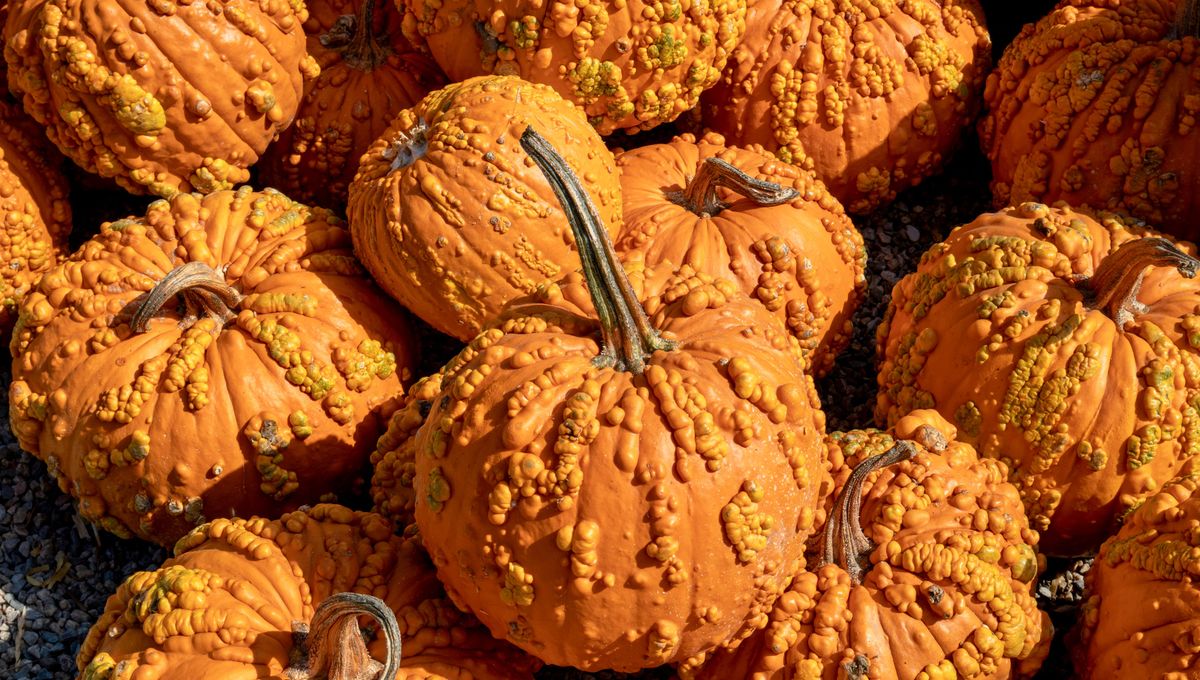
That perfectly carved pumpkin sitting pretty on your porch could be hiding a dark secret. You see, pumpkins, squash, and other gourds can harbor toxic pollutants, posing a potential health risk if ingested. Now, new research has revealed the biology underpinning this phenomenon, and the findings could help to clean up pumpkin’s pernicious act.
The gourd family, or Cucurbitaceae, is made up of around 1,000 species of fruits and vegetables, including some popular classics like pumpkins, cucumbers, zucchini, and watermelons. While tasty, these plants have an unusual tendency to accumulate pollutants from the soil and store them in their edible parts.
“The pollutants don’t easily break down and thus pose a health risk to people who eat the fruit,” Kobe University agricultural scientist Inui Hideyuki explained in a statement. “Interestingly, other plants don’t do this and so I became interested in why this happens in this group specifically.”
Previous research from Inui and colleagues identified a class of proteins found in gourds, called major latex-like proteins (MLPs), which bind to pollutants, aiding their passage from the root through the plant’s tissues. Earlier this year, they reported that the shape of these proteins and how strongly they attach to pollutants dictate how much of these chemicals reach the aboveground parts of the plant.
However, MLPs are found in lots of other plants as well, and even among the gourds, there’s substantial variation in pollutant accumulation, leaving the researchers wondering why some species are worse offenders than others. But then, a breakthrough.
“We […] noticed that in the highly accumulating varieties, there are higher concentrations of the protein in the sap,” said Inui, which prompted the team to take a closer look.
In the new study, they aimed to discover exactly how MLPs are secreted into the plant’s sap. In plants prone to high pollutant accumulation, these proteins are released, they found, while other versions of them are retained in the cells. They also identified a small variation in the protein’s amino acid sequence that acts as a “tag”, indicating to the cells which proteins should be held on to and which should be excreted.
“Only secreted proteins can migrate inside the plant and be transported to the aboveground parts. Therefore, this seems to be the distinguishing factor between low-pollution and high-pollution plant varieties,” Inui explained.
When they tested this in tobacco plants by introducing the highly accumulating version of MLP, the modified plants also exported the protein into their sap, confirming the mechanism.
By furthering our understanding of how pumpkins and other gourds absorb more pollution than other crops, the study could help pave the way toward growing safer fruits and veggies.
“By controlling the behavior of contaminant-transporting proteins, through genetic modification of their pollutant-binding ability or its excretion into the plant sap, we believe it will be possible to cultivate safe crops that do not accumulate harmful chemicals in their edible parts,” said Inui.
The researchers are also keen to take things even further, and speculate that, in the future, we could use what we’ve learnt here to engineer plants that can clean contaminated land.
“I started this research because I was looking for plants that can detect and digest pollutants effectively. Therefore, I also envision that we could use the knowledge gained through this work for creating plants that are more effective in absorbing soil pollutants. This could turn into a technology for cleaning contaminated soils,” Inui added.
But before the days of super-powered pumpkins are upon us, don’t be tempted to dump yours in the woods after Halloween – the wildlife will not be thankful for it.
On another note, ever wondered why some pumpkins have warts? We’ve got you covered.
The study is published in Plant Physiology and Biochemistry.
Source Link: Your Halloween Pumpkin Could Be Concealing Toxic Chemicals – And Now We Know Why